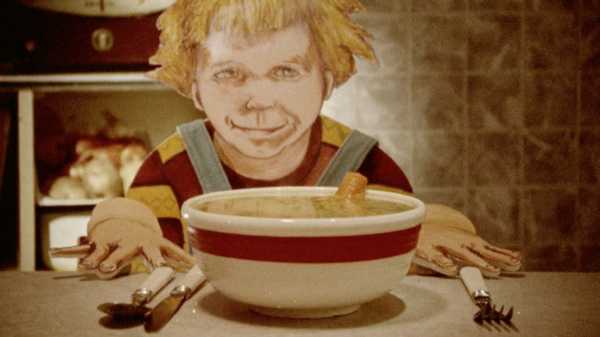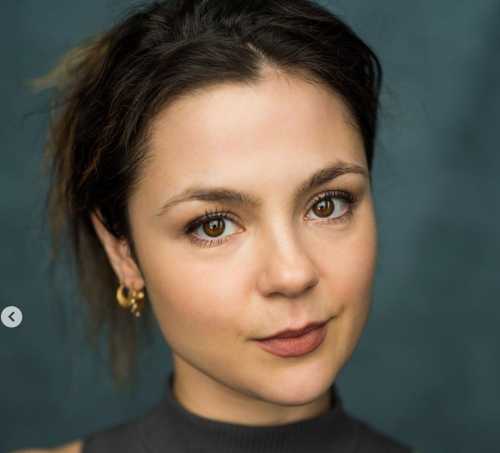
The best new movie this weekend isn’t playing this weekend and isn’t
really new—it’s the restoration of Jan Oxenberg’s 1992 documentary
“Thank You and Good Night,” at Museum of the Moving Image next Tuesday,
with the filmmaker herself on hand for a discussion. The film is only
new in the realm of artistic originality, and in that regard, it far
outpaces most films released today. What’s more, after its release at
Film Forum, in 1992, and its VHS release, it seems to have vanished—no
DVD, no streaming, no recent revival—so the preservation and
recirculation of “Thank You and Good Night” is cause for celebration.
What’s no cause for celebration is that it’s the last feature film, to
date, that Oxenberg has directed. In what is an infuriating litany
regarding extraordinary films by female directors, it ought to have
launched her directorial career and it didn’t.
The subject of “Thank You and Good Night” is simple—it’s a hybrid
personal documentary in which Oxenberg, learning that her grandmother is
terminally ill, films her grandmother’s last days and explores their
relationship along with other family bonds. But what Oxenberg does with
the premise is breathtakingly original. She redefines the very essence
of the genre, and does so from the start. The movie’s first scene—set
after her grandmother’s death, and setting up the documentation of her
grandmother’s final illness—is a burst of lucid but immensely complex
dramaturgy and assemblage, a marvel of associative imagination, both
inner and artistic. It sets the tone and the style for the entire film,
which blends documentary and fiction, drama and comedy, spontaneous
confession and analytical contemplation, intimate experience and
historical resonance, observation and artifice. It’s one of the most
thrilling, astonishing opening sequences to a movie that I’ve ever seen.
Oxenberg describes, in voice-over, the search for her late
grandmother—and her camera scans a waiting line of bus passengers for
her grandmother’s shoes—while a near-life-size painted cardboard cutout
of Oxenberg’s childhood self stands sentinel at the bus stop. Oxenberg
reminisces about being taken, as a child, by her grandmother to an
old-style movie palace to see “The Pajama Game.” She shows documentary
footage of the lavish theatre—into which life-size painted cutouts of
Oxenberg and her grandmother are inserted, in the lobby, in seats. Her
grandmother’s cutouts multiply to fill the theatre, take the place of
the theatre’s many ushers, fill the screen, and even reach the gilded
ceiling, all to the strains of “Hernando’s Hideaway,” while Oxenberg
muses and confesses on the soundtrack about being gruff and mean to her
grandmother as a child and wondering—now that she knows that her
grandmother is dying—“how to say goodbye.”
That’s when another clip from “The Pajama Game” takes over, “Racing with
the Clock,” which, of course, is what Oxenberg must do, throughout the
film, to spend time with her grandmother and film her before her death.
The cutout of Oxenberg introduces a filmed interview with her
grandmother—followed by faux-documentary footage of movie-house patrons,
dressed in the styles of the nineteen-fifties, emerging from the theatre
and being interviewed, person-in-the-street-style, in the lobby, about
Oxenberg’s grandmother. (Each person is identified in a subtitle—a
neighbor, a friend, a pharmacist, a sister-in-law, a sister, a caterer.)
In those first five minutes, Oxenberg binds these disparate elements
with her own voice-over by way of canny, incisive, resonant editorial
juxtapositions (the editor is Lucy Winer), and the rest of the movie
maintains the same level and scope of intimacy and loftiness,
confessional pain and self-deprecating distance.
Oxenberg’s grandmother, Mae Joffe (1900-1979), called Grandma throughout
the film, was robust and vigorous in earlier days (as seen in home
movies and family photographs), but when Oxenberg films her she’s frail
and moves with difficulty. She’s revealed to have had a difficult
life—an unhappy marriage, an oppressive mother-in-law, a strained
relationship with her daughter, Helen—Oxenberg’s mother, who’s a
presence throughout the film. (The crucial source of tension seems to be
Helen’s escape from her mother’s indoctrination in domesticity by
getting an education and becoming a social worker.) Mae, Oxenberg, and
the entire family is scarred by the trauma of a family tragedy, when
Oxenberg’s sister Judy was hit by a car and killed decades earlier. (The
story of Judy’s death, and its place in Oxenberg’s own memories, is
woven throughout the film with a sensitive and wounded ingenuity—also
including a cardboard cutout in a dramatic reënactment—that seems to
replicate, in its various and divergent forms and fragments, the power
of memory and repression, of torment and guilt.)
Mae expresses her sharp, blunt critiques of her family—including her own
grandchildren, Oxenberg, her brothers, and her sister—yet her love of
her family is unflagging. On her deathbed, she says that her happiness
in life is her grandchildren (and two great-grandchildren), and her
familial devotion is never stronger than in her commitment to Oxenberg’s
own film. For that matter, her relationship to Oxenberg, and to her own
participation in the documentary, seems transfigured in the course of
the filming. What appears, at first, to be a patient tolerance for
Oxenberg’s cameras develops into something strangely and passionately
symbiotic: as Oxenberg asks Mae speculative questions (as about the
afterlife), Mae—one of whose lifelong torments, Oxenberg says, was the
failure of those closest to her to pay attention to her—blossoms,
despite her frailty and her pain, in the spotlight.
Gravely suffering in a hospital bed brought into her apartment, Mae
jokes after learning that Oxenberg filmed, without her knowledge, her
radiation treatment in the hospital: “They must have thought I was some
celebrity coming down the hall.” Mae’s mortal agony is horrifying to
observe—and Oxenberg punctuates it with her cardboard-cutout alter ego
looking in, through a window, while her grandmother struggles to murmur,
“Mama! Mama!” When Oxenberg asks what she’s saying, Mae responds,
“Goodbye,” and adds, “I’m going to send for you.” But as Oxenberg jokes
about sending for her “if you have any trouble there,” Mae says, “Don’t
forget to bring these cameras—bring the cameras, bring the film, bring
everything. . . . Show ’em the pictures, show ’em the movies.” In some
strange, disturbing, yet deeply moving and touching way, Mae appears
aware that she is bearing witness to an extraordinary process, starring
in an extraordinary drama—the drama of death. The subject of “Thank You
and Good Night” is more than the effort to film a relationship or a
family; it’s the effort to film the unfilmable—to film death from the
other side.
Oxenberg devises ever more wondrous theatrical mechanisms to represent
the work of death and the confrontation with death, including a faux
quiz show in which Oxenberg is the contestant, a Rube Goldberg-esque
machine that would cure Mae’s cancer, a celestial diorama with a toy
spaceship to represent Oxenberg (the cardboard-cutout astronaut)
imagining her journey into her own death, and—the very summit of her
inventive genius—a sequence, too good to spoil, representing one
mourner’s citation of the psychiatrist and author Elisabeth
Kübler-Ross’s likening of death to passage through a tunnel. The
development and realization of the sequence, featuring a large cast of
extras and the music of Curtis Mayfield, is one of the grandest
cinematic metaphors I’ve ever seen. The closest thing to it is in Raúl
Ruiz’s own musing on death in his final film, “Night Across the Street,”
from 2012; Ruiz, who had much more directorial experience, makes his
metaphor cinema-centric. Oxenberg, a documentarist, transforms daily
life and daily observation with a whimsically lofty, hands-on sense of
spectacle.
Interviews with Oxenberg’s brother Ricky, in which he ponders matters of
life and death in the family circle, bring Oxenberg’s overarching theme
even more clearly to light—the extraordinary in the ordinary, the
metaphysical power and cosmic import of quotidian existence and
inevitable death, the enduring subjective treasure of a single
relationship. Oxenberg’s film exalts the immortal grandeur of every life
and death—and the urgency of the power of art, and of artists, to
recognize, record, and reveal it.
Sourse: newyorker.com






